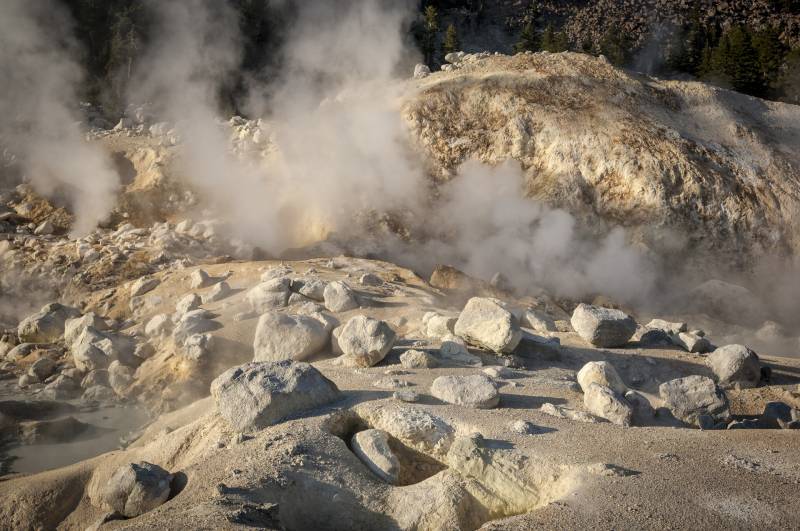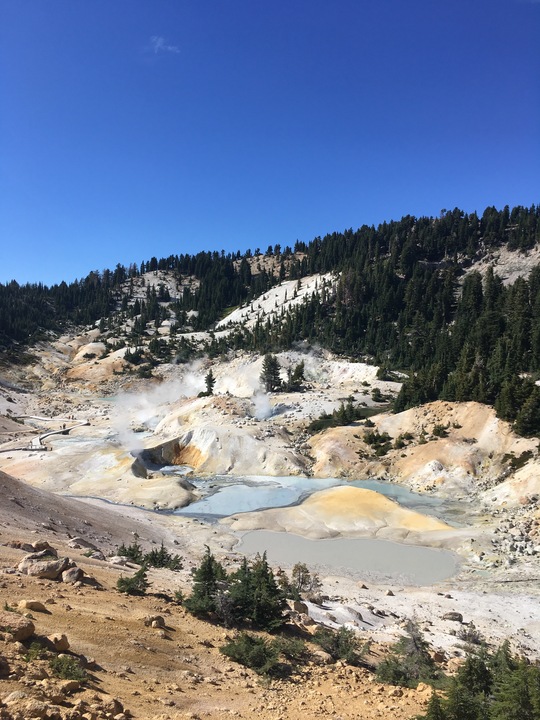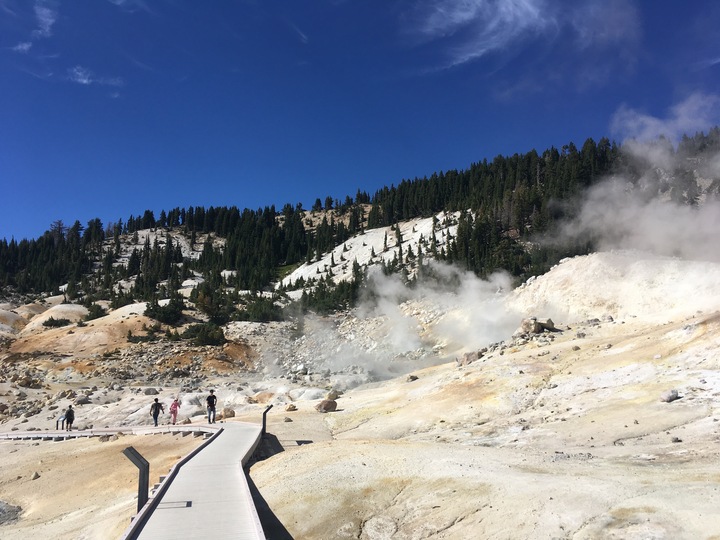Lassen Volcanic National Park, sometimes called “California’s Yellowstone” for its geothermal activity, is a gorgeous landscape of volcanic peaks about a four hour drive from San Francisco.
Welcome to Bumpass Hell, a Bubbling, Stinky Sliver of 'California's Yellowstone'

The park is snow-covered in winter and filled with meadows of colorful wildflowers in the summer. While the Dixie Fire charred much of the landscape in 2021, parts of the park are still green and fresh, home to hemlock and whitebark pine trees, birds and yellow-winged grasshoppers.

And other parts look more like Mars, or … maybe, hell. The most famous, known for its bubbling mud pots and steaming vents, is called Bumpass Hell.
But it’s not pronounced “Bump Ass,” more like “Bump Us.” It’s named after mountaineer Kendall Vanhook Bumpass, who held a mineral claim here in the 1860s.

In 1865, Bumpass brought a group of visitors out to see the surreal landscape. And while showing them around, he stepped through the crust … into a nearly 240°F, highly acidic mud pot.
According to park ranger Shanda Ochs, his companions pulled him out and dragged him to a nearby patch of snow, which they packed around his boiled leg. Still, it ended up having to be amputated. So the region became known as his “hell.”
“Not a good day for Mr. Kendall Bumpass,” said Ochs, who has spent years greeting modern-day tourists and encouraging them to stay on the boardwalk built above the bubbling pools.
She explains that the rain and snow that falls in the winter seeps down toward a magma chamber (PDF) about 5 miles underground. The water then heats up and rises back to the surface — escaping as boiling pools and hissing steam vents.
The trail to Bumpass Hell starts near a sapphire lake at the base of Lassen Peak. For the first mile or so of the hike, the mountain air can be fresh and bracing, spiced with pine. Jagged peaks ring the horizon. Chipmunks scamper across the trail.
Then comes the smell of sulfur and, from an overlook, you see the first view of a white, barren, steaming landscape, perforated with murky pools.
“It’s like another world,” said visitor Marilyn Steinberg, sitting on a bench, marveling at the thick, sulfuric mist.

Up close, the smelly, muddy pools churn and simmer. Signs featuring gruesome photos of blistery burns, or stick figures plummeting into chasms of lava, warn visitors to stay on the boardwalk. Clearly the pools are no place for humans.
But microscopic single-celled organisms called extremophiles love it here. They use sulfur for energy, and convert it into sulfuric acid, which is basically battery acid. That eats through the rocks, and bubbles out into a stinky white creek running next to us. It’s carrying sheets of ghostly white algae, another lifeform that actually likes this heat and acid.
“It’s very surreal, honestly,” said Cody Harwood, visiting from San Diego. “It’s just like this barren hellscape and it smells like eggs.”
As the sulfuric acid reacts with the rocks in the ground, new brightly colored minerals form. Iron pyrite makes a shiny patch of froth, floating on an aqua pool.
When one of the simmering pools bubbles away, it leaves behind a steam vent. The biggest one, called Big Boiler, can heat up to more than 300 degrees.
Scientists expect that this volatile region will erupt again, but nobody knows when. Meanwhile, if you visit Lassen Volcanic National Park, you can get right up close and hear the bubbling sounds of geology at work.
